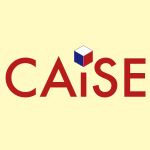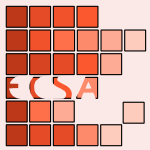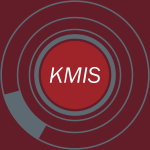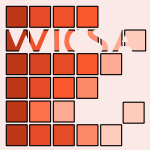64 papers:
 DUXU-UI-2015-LiHF #quality #requirements #scalability #user interface #using
DUXU-UI-2015-LiHF #quality #requirements #scalability #user interface #using- Scaling Preferences of Different Stakeholders — Using the Example of Prioritizing Quality Requirements on User Interface Texts (YL, TH, PF), pp. 75–86.
 CAiSE-2015-HarmanBJRK #elicitation #memory management #process
CAiSE-2015-HarmanBJRK #elicitation #memory management #process- Virtual Business Role-Play: Leveraging Familiar Environments to Prime Stakeholder Memory During Process Elicitation (JH, RB, DJ, SRM, UK), pp. 166–180.
 SEKE-2015-BurnayJF #elicitation #how #requirements
SEKE-2015-BurnayJF #elicitation #how #requirements- How Stakeholders’ Commitment May Affect the Success of Requirements Elicitation (CB, IJ, SF), pp. 336–341.
 REFSQ-2015-HarbersDN #process #requirements
REFSQ-2015-HarbersDN #process #requirements- Embedding Stakeholder Values in the Requirements Engineering Process (MH, CD, MAN), pp. 318–332.
 REFSQ-2015-LiHBG0M #refinement #requirements #specification
REFSQ-2015-LiHBG0M #refinement #requirements #specification- From Stakeholder Requirements to Formal Specifications Through Refinement (FLL, JH, AB, GG, LL, JM), pp. 164–180.
 ECSA-2014-AngelovH #architecture #towards
ECSA-2014-AngelovH #architecture #towards- Towards an Improved Stakeholder Management for Software Reference Architectures (SA, RH), pp. 90–97.
 ITiCSE-2014-LarreaDIJ
ITiCSE-2014-LarreaDIJ- Capstone projects in computer science: evaluated by stakeholders (JJOL, CD, FJGI, AJE), p. 345.
 DUXU-ELAS-2014-CravenLM #design #multi #research
DUXU-ELAS-2014-CravenLM #design #multi #research- Developing mHealth Apps with Researchers: Multi-Stakeholder Design Considerations (MPC, ARL, JLM), pp. 15–24.
 SEKE-2014-NoorianBD #comprehension #product line
SEKE-2014-NoorianBD #comprehension #product line- From Intentions to Decisions: Understanding Stakeholders’ Objectives in Software Product Line Configuration (MN, EB, WD), pp. 671–677.
 RE-2014-Bhowmik #interactive #open source #requirements #social
RE-2014-Bhowmik #interactive #open source #requirements #social- Stakeholders’ social interaction in requirements engineering of open source software (TB), pp. 467–472.
 RE-2014-LaueHBN #communication #performance #visual notation
RE-2014-LaueHBN #communication #performance #visual notation- Efficient visual notations for efficient stakeholder communication (RL, FH, BB, MN), pp. 329–330.
 SPLC-2014-SteinNC #feature model #multi
SPLC-2014-SteinNC #feature model #multi- Preference-based feature model configuration with multiple stakeholders (JS, IN, EC), pp. 132–141.
 CSEET-2013-PenzenstadlerMH #industrial
CSEET-2013-PenzenstadlerMH #industrial- University meets industry: Calling in real stakeholders (BP, MM, PH), pp. 1–10.
 ICSM-2013-MullerF #dependence
ICSM-2013-MullerF #dependence- Stakeholders’ Information Needs for Artifacts and Their Dependencies in a Real World Context (SCM, TF), pp. 290–299.
 CHI-2013-YooHWHF #co-evolution #design #evolution
CHI-2013-YooHWHF #co-evolution #design #evolution- A value sensitive action-reflection model: evolving a co-design space with stakeholder and designer prompts (DY, AH, JPW, DGH, BF), pp. 419–428.
 HCI-UC-2013-StarySF #interactive #learning
HCI-UC-2013-StarySF #interactive #learning- Agility Based on Stakeholder Interaction — Blending Organizational Learning with Interactive BPM (CS, WS, AF), pp. 456–465.
 REFSQ-2013-AzmehMC #community #requirements
REFSQ-2013-AzmehMC #community #requirements- Highlighting Stakeholder Communities to Support Requirements Decision-Making (ZA, IM, PC), pp. 190–205.
 REFSQ-2013-IngolfoSJSPM
REFSQ-2013-IngolfoSJSPM- Choosing Compliance Solutions through Stakeholder Preferences (SI, AS, IJ, AS, AP, JM), pp. 206–220.
 KMIS-2012-PanTG #analysis #component
KMIS-2012-PanTG #analysis #component- A Component-based Method for Stakeholder Analysis (YCP, YT, SRG), pp. 290–293.
 RE-2012-Cleland-HuangMMA #recommendation #traceability
RE-2012-Cleland-HuangMMA #recommendation #traceability- Breaking the big-bang practice of traceability: Pushing timely trace recommendations to project stakeholders (JCH, PM, MM, SA), pp. 231–240.
 RE-2012-Todoran #communication #identification #in the cloud #named #requirements
RE-2012-Todoran #communication #identification #in the cloud #named #requirements- StakeCloud: Stakeholder requirements communication and resource identification in the cloud (IT), pp. 353–356.
 ASE-2011-SoltaniAHGB #automation #feature model
ASE-2011-SoltaniAHGB #automation #feature model- Automated planning for feature model configuration based on stakeholders’ business concerns (SS, MA, MH, DG, EB), pp. 536–539.
 HIMI-v1-2011-Ugai #visualisation
HIMI-v1-2011-Ugai #visualisation- Visualizing Stakeholder Concerns with Anchored Map (TU), pp. 268–277.
 OCSC-2011-Torrent-MorenoGEGP #ecosystem #energy #performance #social
OCSC-2011-Torrent-MorenoGEGP #ecosystem #energy #performance #social- Social Computing for Home Energy Efficiency: Technological and Stakeholder Ecosystems (MTM, RG, RE, JJG, MP), pp. 229–238.
 REFSQ-2011-VeerappaL #clustering #requirements
REFSQ-2011-VeerappaL #clustering #requirements- Clustering Stakeholders for Requirements Decision Making (VV, EL), pp. 202–208.
 SAC-2011-OgnjanovicGBA
SAC-2011-OgnjanovicGBA- Conditional preferences in software stakeholders’ judgments (IO, DG, EB, MA), pp. 683–690.
 ICSE-2011-LimDF #identification #network #requirements #social #using
ICSE-2011-LimDF #identification #network #requirements #social #using- StakeSource2.0: using social networks of stakeholders to identify and prioritise requirements (SLL, DD, AF), pp. 1022–1024.
 ICEIS-AIDSS-2010-LafuenteP #algorithm
ICEIS-AIDSS-2010-LafuenteP #algorithm- Algorithm Applied in the Prioritisation of the Stakeholders (AMGL, LBdP), pp. 181–186.
 SEKE-2010-Zhang #development
SEKE-2010-Zhang #development- Capturing Antagonistic Stakeholder Value Propositions in Value-Based Software Development (DZ), pp. 12–18.
 REFSQ-2010-Fricker #ecosystem #requirements
REFSQ-2010-Fricker #ecosystem #requirements- Requirements Value Chains: Stakeholder Management and Requirements Engineering in Software Ecosystems (SF), pp. 60–66.
 ICSE-2010-LimQF #named #network #scalability #social #using
ICSE-2010-LimQF #named #network #scalability #social #using- StakeNet: using social networks to analyse the stakeholders of large-scale software projects (SLL, DQ, AF), pp. 295–304.
 ICSE-2010-LimQF10a #analysis #crowdsourcing #named #network #power of #social
ICSE-2010-LimQF10a #analysis #crowdsourcing #named #network #power of #social- StakeSource: harnessing the power of crowdsourcing and social networks in stakeholder analysis (SLL, DQ, AF), pp. 239–242.
 SPLC-2010-BagheriNRG #configuration management #feature model #modelling #product line #requirements
SPLC-2010-BagheriNRG #configuration management #feature model #modelling #product line #requirements- Configuring Software Product Line Feature Models Based on Stakeholders’ Soft and Hard Requirements (EB, TDN, AR, DG), pp. 16–31.
 SEKE-2009-BifflSM #automation #ontology #semantic gap
SEKE-2009-BifflSM #automation #ontology #semantic gap- Bridging Semantic Gaps Between Stakeholders in the Production Automation Domain with Ontology Areas (SB, WDS, TM), pp. 233–239.
 RE-2009-Castro-HerreraCM #elicitation #online #recommendation #requirements
RE-2009-Castro-HerreraCM #elicitation #online #recommendation #requirements- Enhancing Stakeholder Profiles to Improve Recommendations in Online Requirements Elicitation (CCH, JCH, BM), pp. 37–46.
 SAC-2009-AgentA #approach #problem
SAC-2009-AgentA #approach #problem- Extending Problem Frames to deal with stakeholder problems: An Agent- and Goal-Oriented Approach (SS, LC), pp. 389–394.
 ECSA-2008-RaadtSV #architecture #enterprise
ECSA-2008-RaadtSV #architecture #enterprise- Stakeholder Perception of Enterprise Architecture (BvdR, SS, HvV), pp. 19–34.
 EDOC-2008-TaylorT #enterprise
EDOC-2008-TaylorT #enterprise- Taking a RaSP to Enterprise Stakeholder Dissonance (RT, CT), pp. 300–306.
 RE-2008-LohmannHL #distributed #elicitation #requirements
RE-2008-LohmannHL #distributed #elicitation #requirements- Web-based Stakeholder Participation in Distributed Requirements Elicitation (SL, PH, KL), pp. 323–324.
 REFSQ-2008-BallejosGM #information management
REFSQ-2008-BallejosGM #information management- A Stakeholder Model for Interorganizational Information Systems (LCB, SMG, JMM), pp. 73–87.
 SAC-2008-YuLLM #configuration management
SAC-2008-YuLLM #configuration management- Configuring features with stakeholder goals (YY, JCSdPL, AL, JM), pp. 645–649.
 HCI-IDU-2007-Uldall-EspersenF #development #usability
HCI-IDU-2007-Uldall-EspersenF #development #usability- Usability and Software Development: Roles of the Stakeholders (TUE, EF), pp. 642–651.
 CAiSE-2007-PachecoT #identification #quality #requirements
CAiSE-2007-PachecoT #identification #quality #requirements- Stakeholder Identification as an Issue in the Improvement of Software Requirements Quality (CP, ET), pp. 370–380.
 RE-2007-BhatG #maintenance #using
RE-2007-BhatG #maintenance #using- Enhancing Requirement Stakeholder Satisfaction during Far-shore Maintenance of Custom Developed Software using Shift-Pattern Model (JMB, MG), pp. 322–327.
 RE-2007-Fricker #network #social #using
RE-2007-Fricker #network #social #using- Explaining Stakeholder Negotiation Using Social Goal Networks (SF), pp. 387–388.
 REFSQ-2007-FrickerGM #implementation #using
REFSQ-2007-FrickerGM #implementation #using- Handshaking Between Software Projects and Stakeholders Using Implementation Proposals (SF, TG, PM), pp. 144–159.
 ICSE-2007-Ludi #requirements
ICSE-2007-Ludi #requirements- Introducing Accessibility Requirements through External Stakeholder Utilization in an Undergraduate Requirements Engineering Course (SL), pp. 736–743.
 CAiSE-2006-PenseriniPSM #implementation
CAiSE-2006-PenseriniPSM #implementation- From Stakeholder Intentions to Software Agent Implementations (LP, AP, AS, JM), pp. 465–479.
 SAC-2006-IfinedoN #enterprise #metric #resource management
SAC-2006-IfinedoN #enterprise #metric #resource management- Prioritization of enterprise resource planning (ERP) systems success measures: viewpoints of two organizational stakeholder groups (PI, NN), pp. 1554–1560.
 ICEIS-v1-2005-ArandaVCP #elicitation #tool support
ICEIS-v1-2005-ArandaVCP #elicitation #tool support- Choosing Groupware Tools and Elicitation Techniques According to Stakeholders’ Features (GNA, AV, AC, MP), pp. 68–75.
 CSCW-2004-MatsushitaIOSKN #collaboration
CSCW-2004-MatsushitaIOSKN #collaboration- Lumisight table: a face-to-face collaboration support system that optimizes direction of projected information to each stakeholder (MM, MI, TO, YS, YK, TN), pp. 274–283.
 ICEIS-v1-2004-Gilb #metric #multi #performance #project management #quality
ICEIS-v1-2004-Gilb #metric #multi #performance #project management #quality- Evolutionary Project Management: Multiple Performance, Quality and Cost Metrics for Early and Continuous Stakeholder Value Delivery (TG), p. VII.
 ICEIS-v1-2004-Loucopoulos #requirements
ICEIS-v1-2004-Loucopoulos #requirements- Engaging Stakeholders in the Definition of Strategic Requirements (PL), p. III.
 ICEIS-v3-2004-CechichP #component #functional #off the shelf
ICEIS-v3-2004-CechichP #component #functional #off the shelf- Balancing Stakeholder’s Preferences on Measuring COTS Component Functional Suitability (AC, MP), pp. 115–122.
 RE-2004-KaiyaOK #case study #diagrams #identification
RE-2004-KaiyaOK #case study #diagrams #identification- Identifying Stakeholders and Their Preferences about NFR by Comparing Use Case Diagrams of Several Existing Systems (HK, AO, KK), pp. 112–121.
 SAS-2002-Hall #challenge #distributed #modelling #multi #research
SAS-2002-Hall #challenge #distributed #modelling #multi #research- Open Modeling in Multi-stakeholder Distributed Systems: Research and Tool Challenges (RJH), p. 2.
 CAiSE-2002-SmolanderP #architecture #communication
CAiSE-2002-SmolanderP #architecture #communication- Describing and Communicating Software Architecture in Practice: Observations on Stakeholders and Rationale (KS, TP), pp. 117–133.
 RE-2002-DamianZ #multi #requirements
RE-2002-DamianZ #multi #requirements- The Impact of Stakeholders? Geographical Distribution on Managing Requirements in a Multi-Site Organization (DED, DZ), pp. 319–330.
 RE-2002-GiesenV #requirements
RE-2002-GiesenV #requirements- Requirements Interdependencies and Stakeholders Preferences (JG, AV), pp. 206–212.
 RE-2001-AntonEAP #policy #privacy #requirements
RE-2001-AntonEAP #policy #privacy #requirements- The Role of Policy and Stakeholder Privacy Values in Requirements Engineering (AIA, JBE, TAA, CP), pp. 138–145.
 SAC-2000-JaberNR #approach #product line #validation
SAC-2000-JaberNR #approach #product line #validation- Product Line Stakeholder Viewpoint Approach and Validation Model (KJ, NN, DCR), pp. 871–875.
 WICSA-1999-ChungGY #architecture #design #requirements
WICSA-1999-ChungGY #architecture #design #requirements- Architectural Design to Meet Stakeholder Requirements (LC, DG, ESKY), pp. 545–564.
 ICSE-1997-RobinsonV #metamodelling #requirements
ICSE-1997-RobinsonV #metamodelling #requirements- A Meta-Model for Restructuring Stakeholder Requirements (WNR, VV), pp. 140–149.
 ICRE-1996-GonzalesW #design #process
ICRE-1996-GonzalesW #design #process- A facilitator method for upstream design activities with diverse stakeholders (RMG, ALW), pp. 190–198.
 DUXU-UI-2015-LiHF #quality #requirements #scalability #user interface #using
DUXU-UI-2015-LiHF #quality #requirements #scalability #user interface #using CAiSE-2015-HarmanBJRK #elicitation #memory management #process
CAiSE-2015-HarmanBJRK #elicitation #memory management #process SEKE-2015-BurnayJF #elicitation #how #requirements
SEKE-2015-BurnayJF #elicitation #how #requirements REFSQ-2015-HarbersDN #process #requirements
REFSQ-2015-HarbersDN #process #requirements REFSQ-2015-LiHBG0M #refinement #requirements #specification
REFSQ-2015-LiHBG0M #refinement #requirements #specification ECSA-2014-AngelovH #architecture #towards
ECSA-2014-AngelovH #architecture #towards ITiCSE-2014-LarreaDIJ
ITiCSE-2014-LarreaDIJ DUXU-ELAS-2014-CravenLM #design #multi #research
DUXU-ELAS-2014-CravenLM #design #multi #research SEKE-2014-NoorianBD #comprehension #product line
SEKE-2014-NoorianBD #comprehension #product line RE-2014-Bhowmik #interactive #open source #requirements #social
RE-2014-Bhowmik #interactive #open source #requirements #social RE-2014-LaueHBN #communication #performance #visual notation
RE-2014-LaueHBN #communication #performance #visual notation SPLC-2014-SteinNC #feature model #multi
SPLC-2014-SteinNC #feature model #multi CSEET-2013-PenzenstadlerMH #industrial
CSEET-2013-PenzenstadlerMH #industrial ICSM-2013-MullerF #dependence
ICSM-2013-MullerF #dependence CHI-2013-YooHWHF #co-evolution #design #evolution
CHI-2013-YooHWHF #co-evolution #design #evolution HCI-UC-2013-StarySF #interactive #learning
HCI-UC-2013-StarySF #interactive #learning REFSQ-2013-AzmehMC #community #requirements
REFSQ-2013-AzmehMC #community #requirements REFSQ-2013-IngolfoSJSPM
REFSQ-2013-IngolfoSJSPM KMIS-2012-PanTG #analysis #component
KMIS-2012-PanTG #analysis #component RE-2012-Cleland-HuangMMA #recommendation #traceability
RE-2012-Cleland-HuangMMA #recommendation #traceability RE-2012-Todoran #communication #identification #in the cloud #named #requirements
RE-2012-Todoran #communication #identification #in the cloud #named #requirements ASE-2011-SoltaniAHGB #automation #feature model
ASE-2011-SoltaniAHGB #automation #feature model HIMI-v1-2011-Ugai #visualisation
HIMI-v1-2011-Ugai #visualisation OCSC-2011-Torrent-MorenoGEGP #ecosystem #energy #performance #social
OCSC-2011-Torrent-MorenoGEGP #ecosystem #energy #performance #social REFSQ-2011-VeerappaL #clustering #requirements
REFSQ-2011-VeerappaL #clustering #requirements SAC-2011-OgnjanovicGBA
SAC-2011-OgnjanovicGBA ICSE-2011-LimDF #identification #network #requirements #social #using
ICSE-2011-LimDF #identification #network #requirements #social #using ICEIS-AIDSS-2010-LafuenteP #algorithm
ICEIS-AIDSS-2010-LafuenteP #algorithm SEKE-2010-Zhang #development
SEKE-2010-Zhang #development REFSQ-2010-Fricker #ecosystem #requirements
REFSQ-2010-Fricker #ecosystem #requirements ICSE-2010-LimQF #named #network #scalability #social #using
ICSE-2010-LimQF #named #network #scalability #social #using ICSE-2010-LimQF10a #analysis #crowdsourcing #named #network #power of #social
ICSE-2010-LimQF10a #analysis #crowdsourcing #named #network #power of #social SPLC-2010-BagheriNRG #configuration management #feature model #modelling #product line #requirements
SPLC-2010-BagheriNRG #configuration management #feature model #modelling #product line #requirements SEKE-2009-BifflSM #automation #ontology #semantic gap
SEKE-2009-BifflSM #automation #ontology #semantic gap RE-2009-Castro-HerreraCM #elicitation #online #recommendation #requirements
RE-2009-Castro-HerreraCM #elicitation #online #recommendation #requirements SAC-2009-AgentA #approach #problem
SAC-2009-AgentA #approach #problem ECSA-2008-RaadtSV #architecture #enterprise
ECSA-2008-RaadtSV #architecture #enterprise EDOC-2008-TaylorT #enterprise
EDOC-2008-TaylorT #enterprise RE-2008-LohmannHL #distributed #elicitation #requirements
RE-2008-LohmannHL #distributed #elicitation #requirements REFSQ-2008-BallejosGM #information management
REFSQ-2008-BallejosGM #information management SAC-2008-YuLLM #configuration management
SAC-2008-YuLLM #configuration management HCI-IDU-2007-Uldall-EspersenF #development #usability
HCI-IDU-2007-Uldall-EspersenF #development #usability CAiSE-2007-PachecoT #identification #quality #requirements
CAiSE-2007-PachecoT #identification #quality #requirements RE-2007-BhatG #maintenance #using
RE-2007-BhatG #maintenance #using RE-2007-Fricker #network #social #using
RE-2007-Fricker #network #social #using REFSQ-2007-FrickerGM #implementation #using
REFSQ-2007-FrickerGM #implementation #using ICSE-2007-Ludi #requirements
ICSE-2007-Ludi #requirements CAiSE-2006-PenseriniPSM #implementation
CAiSE-2006-PenseriniPSM #implementation SAC-2006-IfinedoN #enterprise #metric #resource management
SAC-2006-IfinedoN #enterprise #metric #resource management ICEIS-v1-2005-ArandaVCP #elicitation #tool support
ICEIS-v1-2005-ArandaVCP #elicitation #tool support CSCW-2004-MatsushitaIOSKN #collaboration
CSCW-2004-MatsushitaIOSKN #collaboration ICEIS-v1-2004-Gilb #metric #multi #performance #project management #quality
ICEIS-v1-2004-Gilb #metric #multi #performance #project management #quality ICEIS-v1-2004-Loucopoulos #requirements
ICEIS-v1-2004-Loucopoulos #requirements ICEIS-v3-2004-CechichP #component #functional #off the shelf
ICEIS-v3-2004-CechichP #component #functional #off the shelf RE-2004-KaiyaOK #case study #diagrams #identification
RE-2004-KaiyaOK #case study #diagrams #identification SAS-2002-Hall #challenge #distributed #modelling #multi #research
SAS-2002-Hall #challenge #distributed #modelling #multi #research CAiSE-2002-SmolanderP #architecture #communication
CAiSE-2002-SmolanderP #architecture #communication RE-2002-DamianZ #multi #requirements
RE-2002-DamianZ #multi #requirements RE-2002-GiesenV #requirements
RE-2002-GiesenV #requirements RE-2001-AntonEAP #policy #privacy #requirements
RE-2001-AntonEAP #policy #privacy #requirements SAC-2000-JaberNR #approach #product line #validation
SAC-2000-JaberNR #approach #product line #validation WICSA-1999-ChungGY #architecture #design #requirements
WICSA-1999-ChungGY #architecture #design #requirements ICSE-1997-RobinsonV #metamodelling #requirements
ICSE-1997-RobinsonV #metamodelling #requirements ICRE-1996-GonzalesW #design #process
ICRE-1996-GonzalesW #design #process









